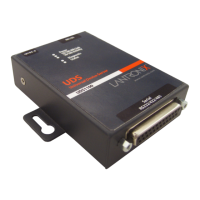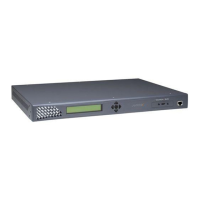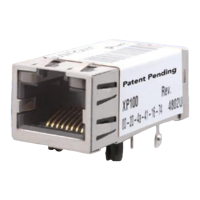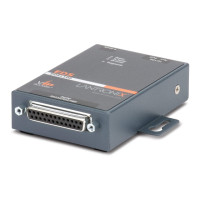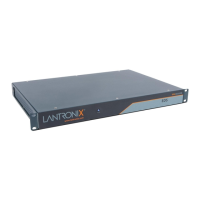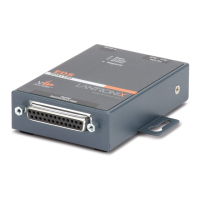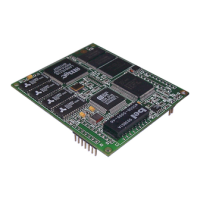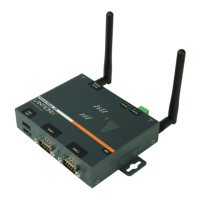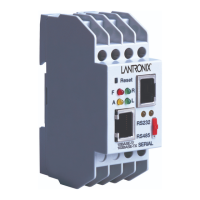UDS2100 Device Server User Guide 84
Earlier chapters describe how to assign a static IP address using DeviceInstaller,
Web Manager, and Setup Mode (through a Telnet or serial connection). This
section covers other methods for assigning an IP address over the network.
DHCP
The unit ships with a default IP address of 0.0.0.0, which automatically enables
DHCP. If a DHCP server exists on the network, it provides the unit with an IP
address, gateway address, and subnet mask when the unit boots up.
You can use the DeviceInstaller software to search the network for the DHCP-
assigned IP address and add it to the list of devices retrieved.
Note: This DHCP address does not appear in the unit’s Setup Mode or in
Web Manager. You can determine your unit’s DHCP-assigned IP address
in Monitor Mode. When you enter Monitor Mode from the serial port with
network connection enabled and issue the NC (Network Communication)
command, you see the unit’s IP configuration.
AutoIP
The unit ships with a default IP address of 0.0.0.0, which automatically enables
Auto IP within the unit. AutoIP is an alternative to DHCP that allows hosts to
obtain an IP address automatically in smaller networks that may not have a
DHCP server. A range of IP addresses (from 169.254.0.1 to 169.254.255.1) has
been explicitly reserved for AutoIP-enabled devices. Do not use this range of
Auto IP addresses over the Internet.
If your unit cannot find a DHCP server, and you have not manually assigned
an IP address to it, the unit automatically selects an address from the AutoIP
reserved range. Then, your unit sends out a (ARP) request to other nodes on
the same network to see whether the selected address is being used.
If the selected address is not in use, then the unit uses it for local subnet
communication.
If another device is using the selected IP address, the unit selects another
address from the AutoIP range and reboots. After reboot, the unit sends out
another ARP request to see if the selected address is in use, and so on.
AutoIP does not replace DHCP. The unit continues to look for a DHCP server on
the network. If it finds a DHCP server, the unit switches to the DHCP server-
provided address and reboots.
Note: If a DHCP server is found, but it denies the request for an IP
address, the unit does not attach to the network, but waits and retries.
E: Alternative Ways to Assign an IP Address
